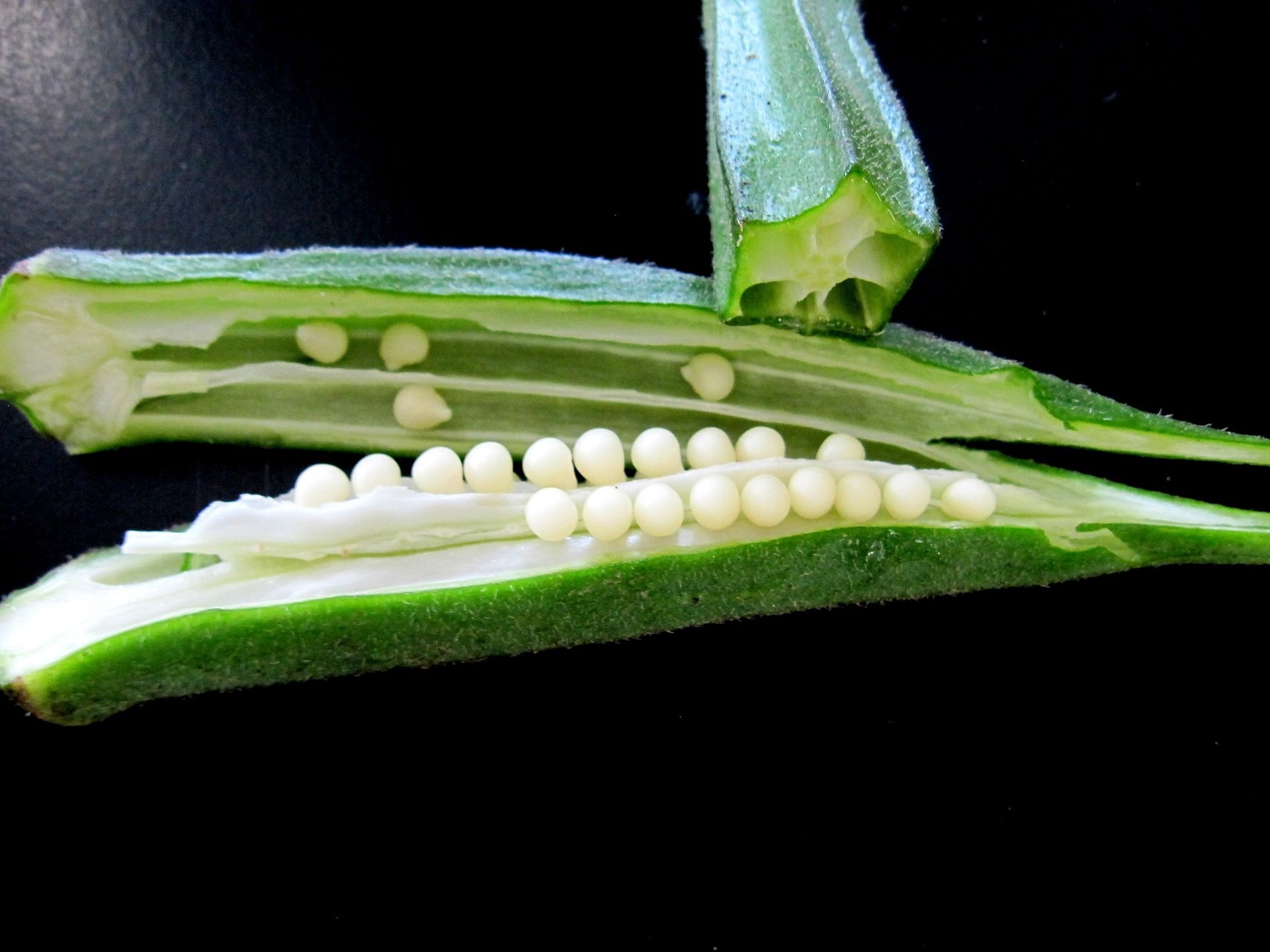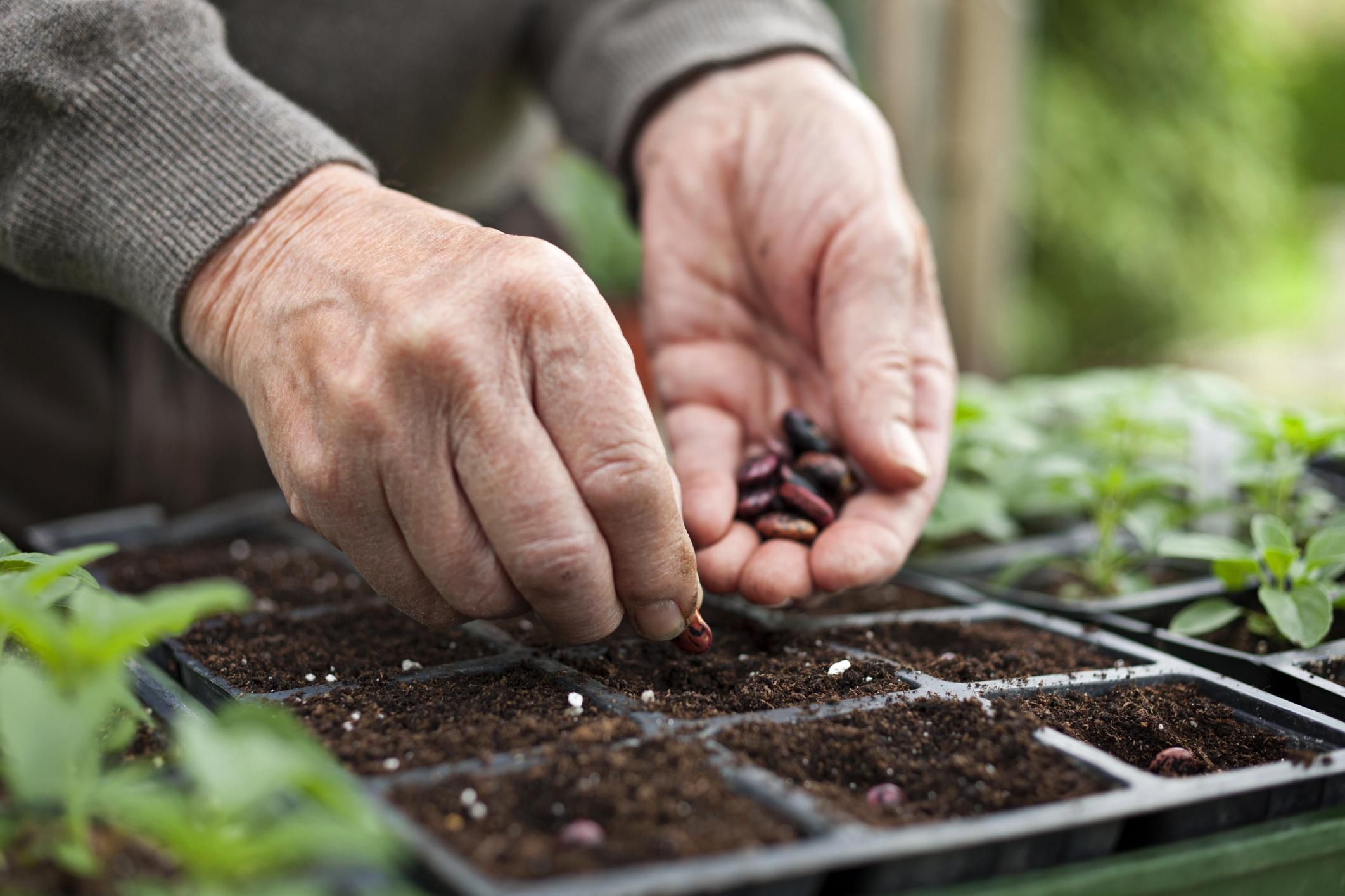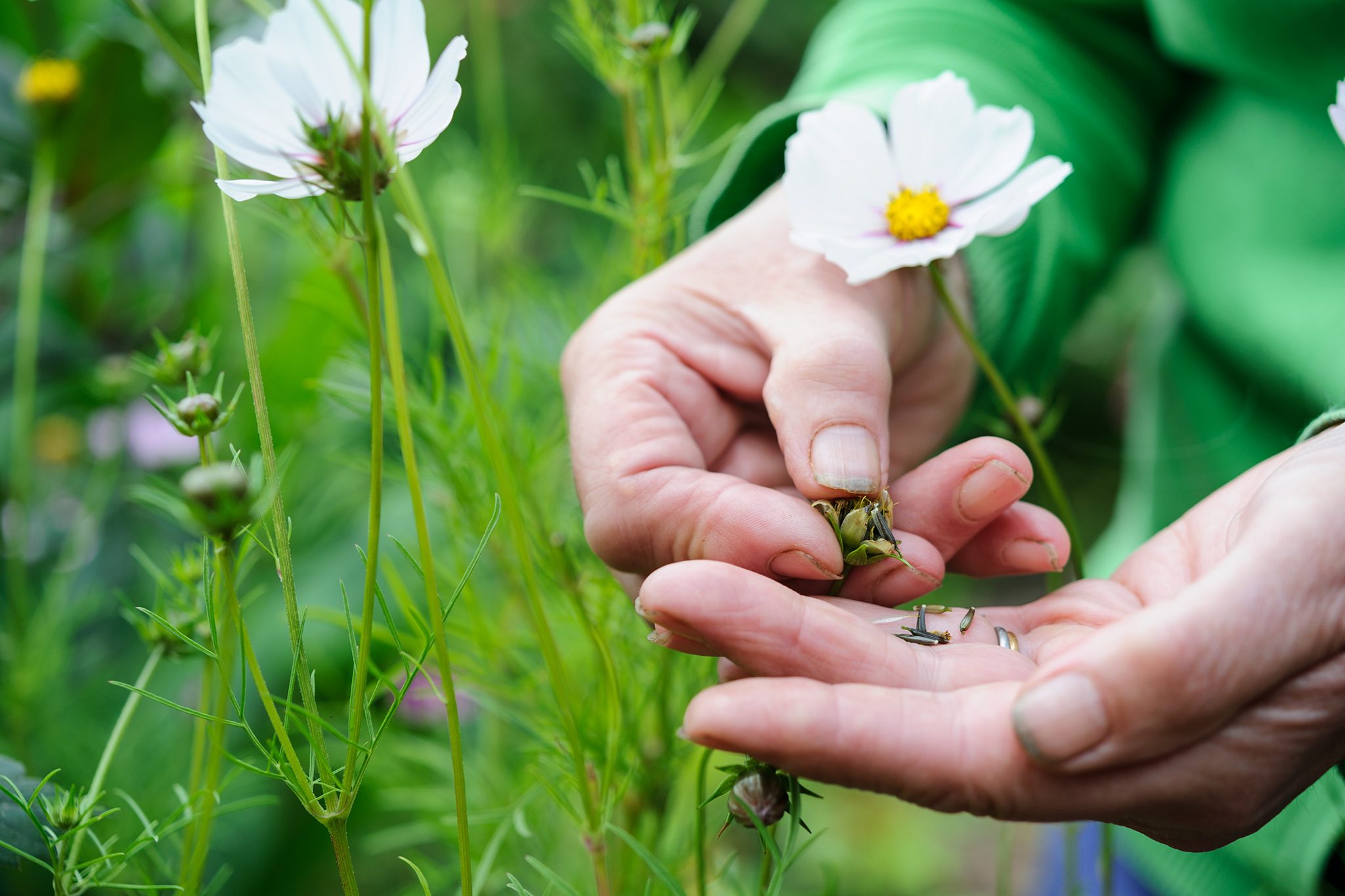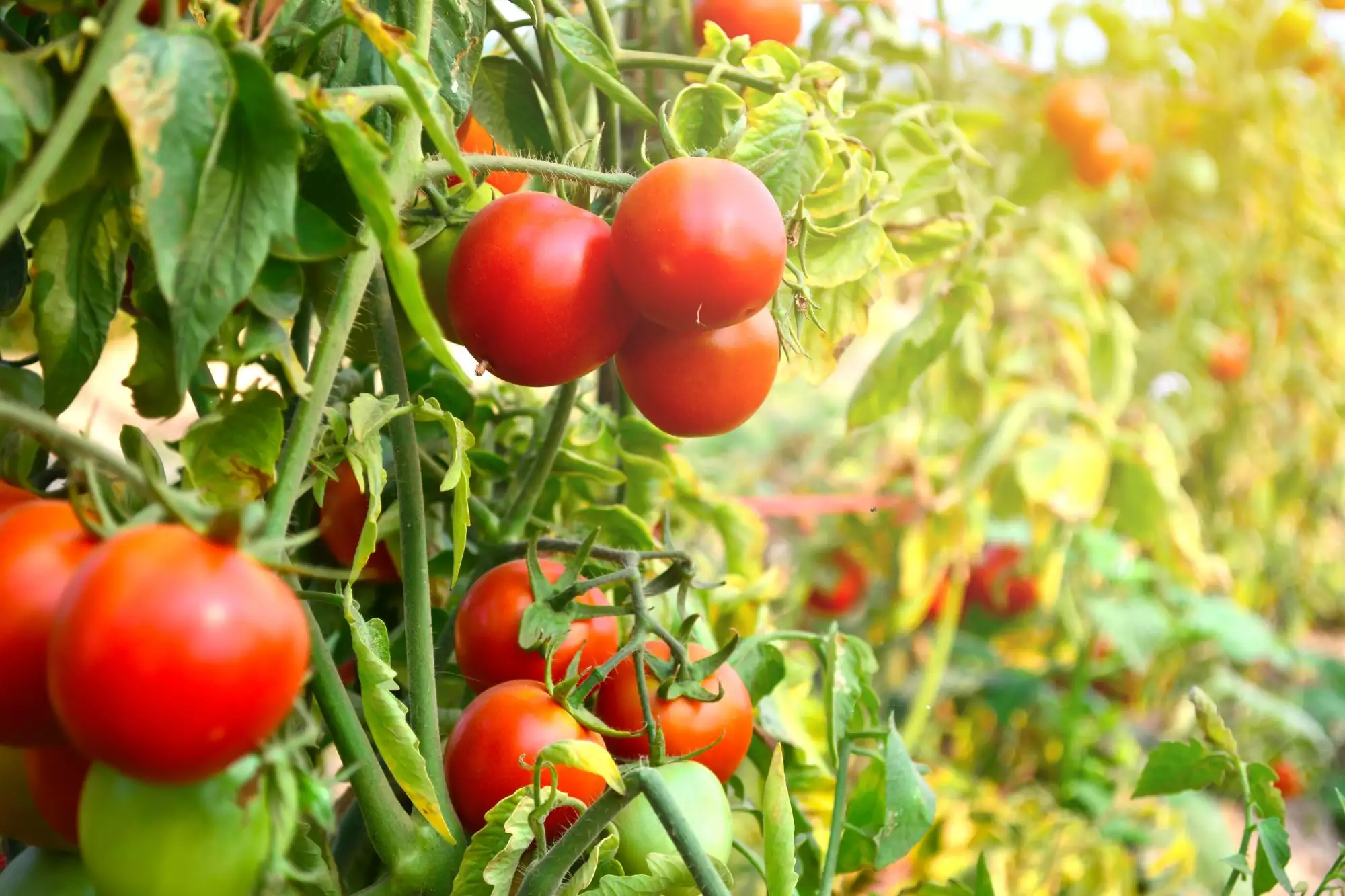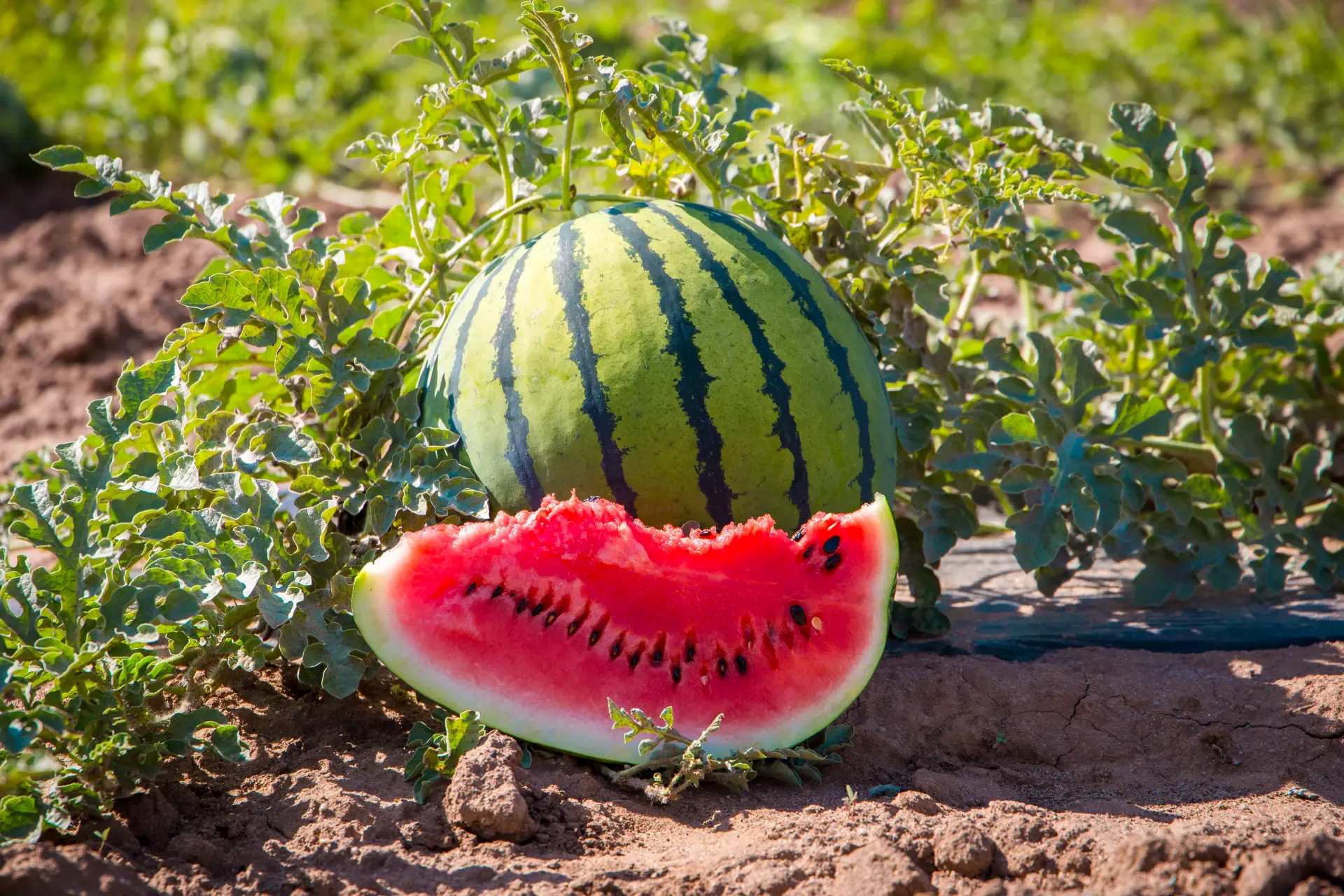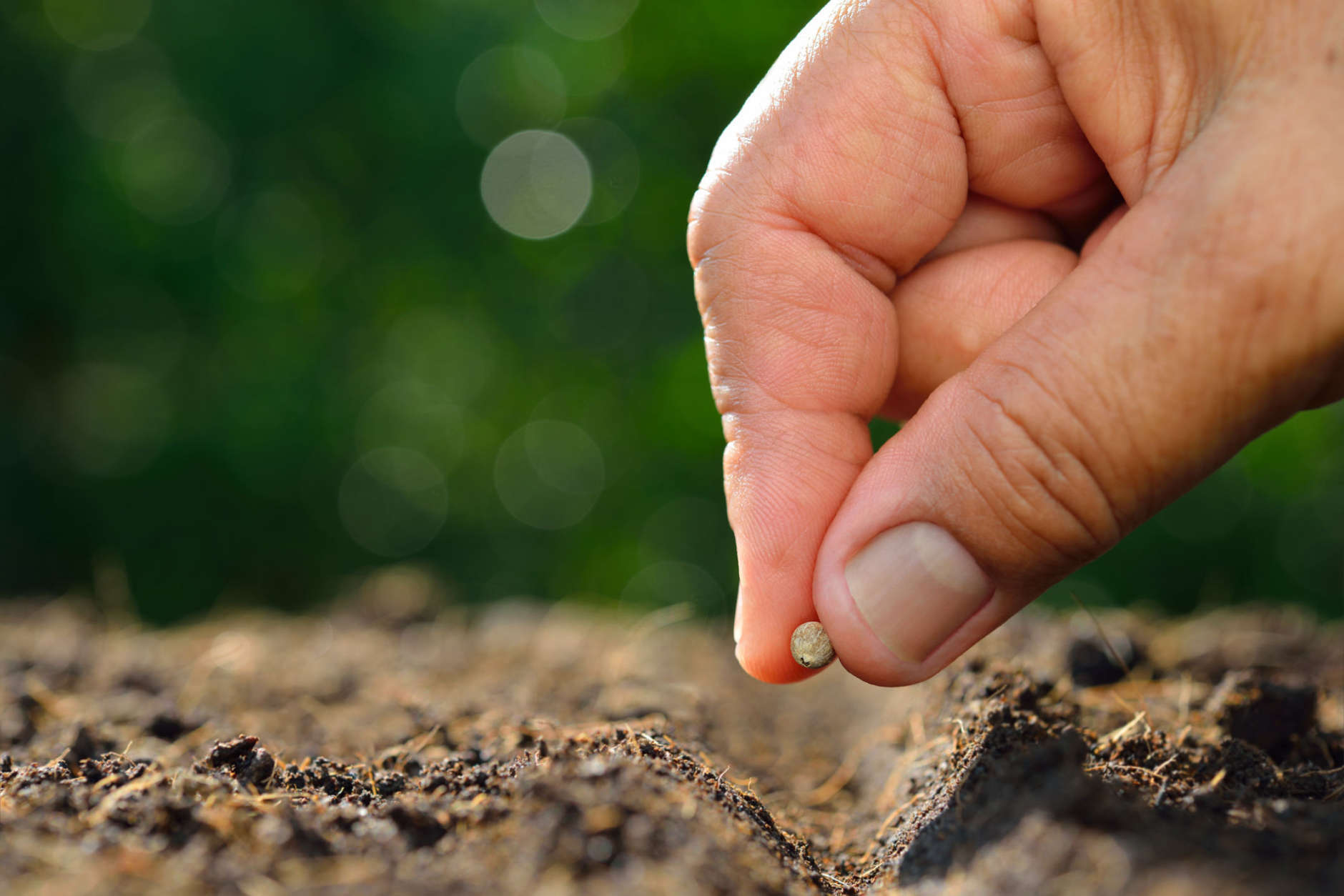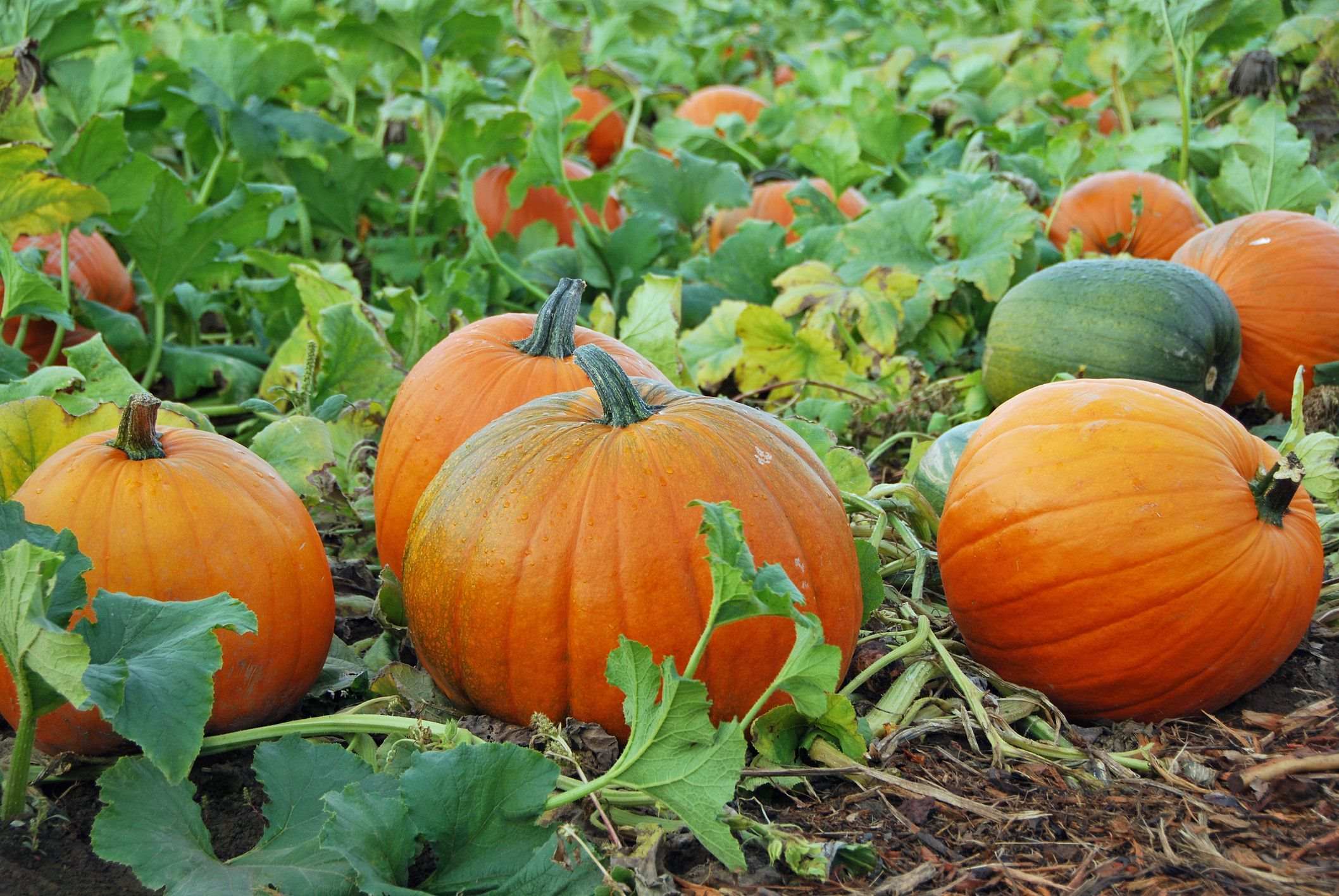Home>Types of Gardening>Ornamental Gardening>When To Plant Morning Glory Seeds
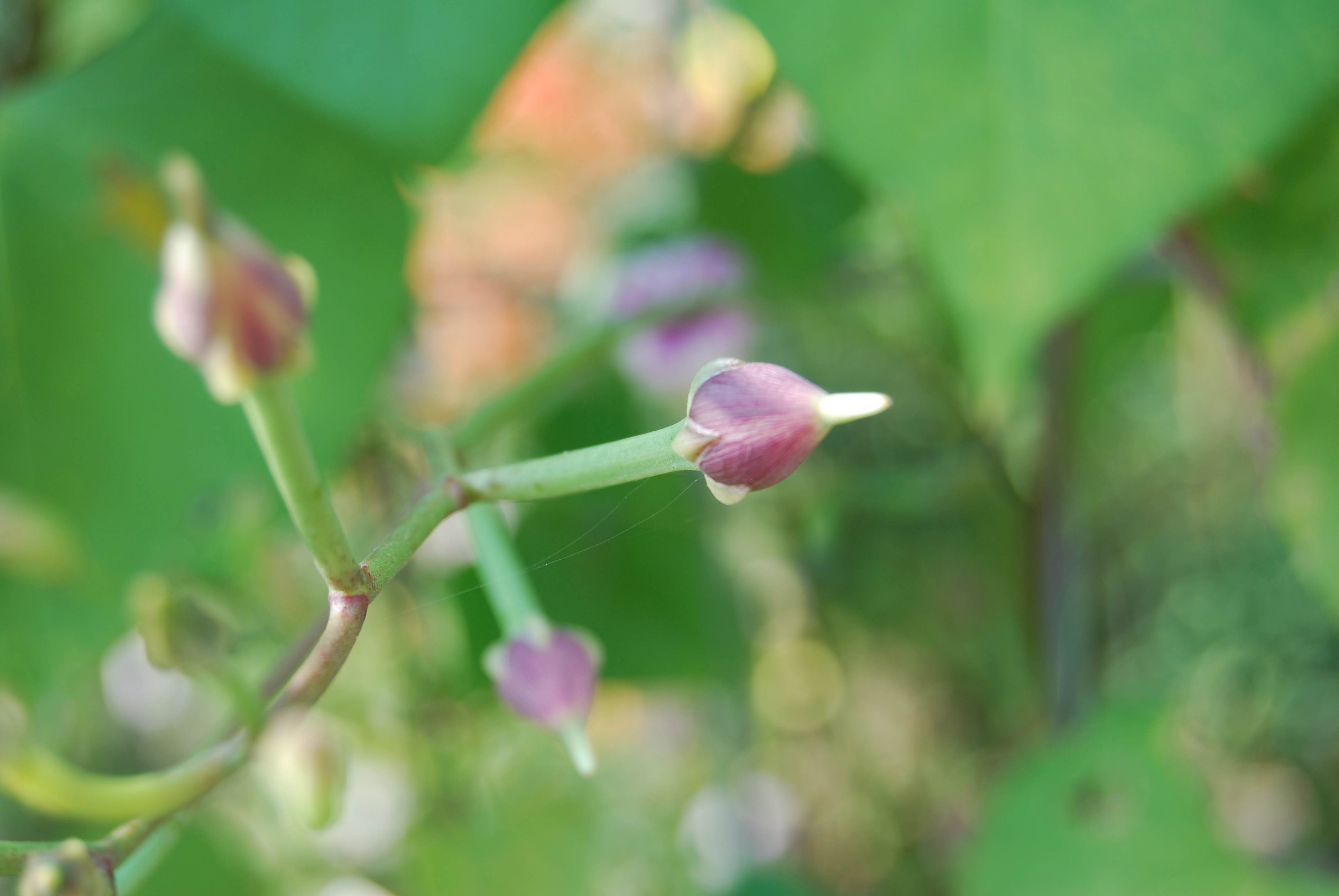

Ornamental Gardening
When To Plant Morning Glory Seeds
Modified: January 22, 2024
Learn the ideal time to plant morning glory seeds for a stunning addition to your ornamental garden. Discover expert tips and techniques for successful growth.
(Many of the links in this article redirect to a specific reviewed product. Your purchase of these products through affiliate links helps to generate commission for Chicagolandgardening.com, at no extra cost. Learn more)
Table of Contents
Introduction
Welcome to the world of ornamental gardening! If you’re looking to add a touch of beauty and charm to your outdoor space, planting morning glory seeds can be a fantastic choice. Morning glories are fast-growing climbing vines that produce vibrant and abundant flowers in a variety of colors. Whether you have a small balcony or a sprawling garden, these gorgeous flowers can transform any space into a colorful oasis.
In addition to their aesthetic appeal, morning glories are also known for their resilience and ease of care. Even novice gardeners can successfully grow these plants with just a little bit of knowledge and effort. By understanding the right time to plant morning glory seeds, preparing the soil, providing proper care, and troubleshooting common issues, you’ll be well on your way to enjoying a bountiful and beautiful display of morning glories.
In this article, we will guide you through the process of planting morning glory seeds, step by step. We’ll cover important considerations like climate and season, soil preparation, watering and care, as well as common issues and troubleshooting. By the end, you’ll have all the information you need to confidently start your own morning glory garden.
So, roll up your sleeves, grab your gardening tools, and let’s dive into the world of morning glory seeds!
Understanding Morning Glory Seeds
Before you begin planting morning glory seeds, it’s important to have a good understanding of these remarkable plants. Morning glories (Ipomoea) belong to the Convolvulaceae family and are native to various regions around the world, including North and South America, Asia, and the Pacific Islands.
There are over 1,000 different species of morning glories, but the most commonly grown variety is the Ipomoea purpurea. These plants are characterized by their heart-shaped leaves and trumpet-shaped flowers, which come in a wide range of captivating colors, including shades of blue, purple, pink, and white.
When it comes to choosing morning glory seeds, you’ll find a vast array of options available. From heirloom varieties with traditional charm to modern hybrids with unique color patterns, there’s something to suit every gardener’s taste. Be sure to check the seed packet or online descriptions to ensure you’re selecting the variety that meets your preferences.
It’s worth noting that morning glory seeds can be classified as either “short-day” or “long-day” plants. Short-day morning glories will bloom earlier in the morning and require less daylight to trigger flowering, while long-day morning glories bloom later in the day and need more sunlight for blooming to occur. Understanding the specific needs of the variety you choose will help you plan your planting and care routine accordingly.
Furthermore, morning glories are known for their fast growth and ability to climb and cover trellises, fences, and other structures with ease. Their twining vines can reach impressive heights, sometimes stretching up to 15 feet (4.5 meters) or more. This makes them an ideal choice for adding vertical interest and creating beautiful backgrounds or privacy screens in your garden.
Now that you have a basic understanding of morning glory seeds, let’s move on to the next section: climate and season considerations. By selecting the right time to plant, you’ll set the stage for successful growth and abundant blooms.
Climate and Season Considerations
When it comes to planting morning glory seeds, understanding your climate and considering the right season is crucial for their successful growth. Morning glories are warm-season annuals that thrive in temperate and tropical regions. They prefer full sun and need a minimum of 6-8 hours of direct sunlight each day to develop strong and healthy plants.
Before you start planting, it’s important to determine your average last frost date. Morning glories are sensitive to cold temperatures and should not be planted outdoors until the threat of frost has passed. If you live in a region with a short growing season or cooler temperatures, it’s a good idea to start the seeds indoors 4-6 weeks before the last frost date to give them a head start.
Planting morning glory seeds directly into the ground can be done once the soil has warmed up and daytime temperatures consistently reach 60°F (15°C) or higher. This is usually in late spring or early summer. However, if you’re in a climate with a long growing season, you can plant the seeds directly outdoors after the last frost date.
It’s important to note that morning glories prefer well-draining soil. Before planting, prepare the soil by removing any weeds or debris and loosening it to a depth of about 6 inches (15 cm). You can amend the soil with compost or organic matter to improve its fertility and drainage. Avoid heavy clay soil, as it can cause waterlogging and root rot.
If you’re unsure about your soil quality, you can perform a simple soil test to determine its pH level. Morning glories prefer slightly acidic to neutral soil, with a pH range of 6.0-7.0. Adjusting the pH level can be done by adding lime to raise the pH or sulfur to lower it, according to the recommendations of the soil test.
By considering your climate and the appropriate season for planting, you’ll provide the ideal conditions for your morning glories to thrive. Next, we’ll dive into the important steps of soil preparation to ensure your plants have the best foundation for growth.
Soil Preparation
Preparing the soil properly is essential for the success of your morning glory plants. As mentioned earlier, morning glories prefer well-draining soil that is rich in organic matter. This will provide them with the necessary nutrients and allow water to drain away, preventing root rot and other soil-related issues.
Start by removing any weeds, rocks, or debris from the planting area. Morning glories can be aggressive climbers, so it’s important to clear any potential obstacles that could hinder their growth. Loosen the soil to a depth of about 6 inches (15 cm) using a garden fork or a tiller. This will help to improve aeration and break up any compacted soil.
If your soil is heavy clay or lacks organic matter, consider adding compost or well-rotted manure. These organic materials will improve the soil structure, enhance drainage, and provide essential nutrients for your morning glory plants. Spread a 2-3 inch (5-7.5 cm) layer of compost or manure over the planting area, then incorporate it into the soil using a garden fork or a tiller.
Before planting, it’s also a good idea to check the soil moisture. Morning glories prefer slightly moist soil, but not overly wet or saturated conditions. You can perform a simple squeeze test by taking a handful of soil and gently squeezing it. If it holds together and feels moist without excessive water dripping out, the soil is at the right moisture level. If it falls apart easily, it may indicate that the soil is too dry and needs watering before planting.
In addition to improving the soil structure, you should also consider providing support for your morning glory plants. As they grow, morning glories will need something to climb on, such as trellises, fences, or a framework specifically designed for climbing plants. Install the support structure in the planting area or near the desired location before planting the seeds. This will help to avoid disturbing the delicate roots of the young plants later on.
By taking the time to properly prepare the soil, you’ll provide a healthy and fertile environment for your morning glory seeds to grow and thrive. With the soil ready, it’s time to move on to the exciting step of planting the seeds and watching your morning glories sprout.
Planting Morning Glory Seeds
Now that you’ve prepared the soil, it’s time to sow your morning glory seeds and watch them transform into beautiful vines. Follow these steps to ensure successful planting:
- Moisten the soil: Before sowing the seeds, lightly moisten the soil to provide a favorable environment for germination. Avoid overwatering, as it can lead to waterlogging and hinder seed growth.
- Sow the seeds: Make small holes in the soil, approximately ½ inch (1.3 cm) deep. Space the holes about 6-12 inches (15-30 cm) apart, as morning glories require room to spread out. Drop one or two seeds into each hole, then cover them gently with soil.
- Label and water: To keep track of your planting, place markers or labels near each seeding area. After planting, water the newly sown seeds gently to ensure the soil is evenly moist.
- Provide warmth and sunlight: Morning glory seeds require warmth and sunlight for germination. Place a clear plastic wrap or a seedling tray cover over the seeded area to create a warm and humid environment. Keep the trays in a sunny spot or use a heat mat to provide bottom warmth.
- Monitor and maintain moisture: Check the moisture level of the soil regularly and water as needed to keep it slightly moist. Avoid overwatering, as it can cause the seeds to rot.
- Transplant or thin seedlings: Once the morning glory seedlings have developed their first true leaves and are a few inches tall, you can thin them out if they are too close together, or transplant them to larger pots or their permanent outdoor location.
Remember to be patient, as morning glory seeds can take 7-21 days to germinate, depending on the temperature and conditions. With proper care and attention, soon you’ll witness the sprouting of these delightful climbers.
Now that your morning glory seeds are planted, it’s important to provide the appropriate care to ensure their healthy growth. In the next section, we’ll delve into watering and other essential aspects of nurturing your morning glory plants.
Watering and Care
Proper watering and care are crucial for the successful growth and blooming of morning glory plants. Follow these guidelines to ensure your plants thrive:
Watering: Morning glories prefer slightly moist soil, so it’s important to water them regularly. Water deeply at the base of the plants, avoiding overhead watering that can lead to fungal diseases. Aim to keep the soil consistently moist, but not overly saturated. During dry periods or hot weather, you may need to water more frequently to prevent the soil from drying out.
Support: As your morning glory plants grow, they will need support to climb and spread. Tie the vines gently to trellises, fences, or other support structures to guide their growth. Avoid using tight or harsh materials that can damage the delicate stems of the vines.
Pruning: Morning glories can be vigorous climbers, so it’s important to keep them in check by pruning when necessary. Trim any unruly or excessive growth to maintain a neat and manageable plant. Pruning can also help encourage more compact and bushy growth, resulting in a denser display of flowers.
Fertilizing: Morning glories are not heavy feeders, but they can benefit from a balanced fertilizer applied once or twice during the growing season. Use a slow-release fertilizer or choose a water-soluble fertilizer, following the manufacturer’s instructions for application. Avoid over-fertilizing, as excessive nutrients can lead to lush foliage growth at the expense of flowers.
Pest and disease control: Morning glories are generally resistant to pests and diseases, but you may encounter issues like aphids, spider mites, or powdery mildew. Monitor your plants regularly and take swift action at the first sign of trouble. Use organic or chemical control methods as needed, ensuring the products are safe for edible plants if you’re growing morning glories near vegetable gardens.
Harvesting: While morning glories are primarily grown for their beautiful flowers, you can also harvest the seeds for future propagation. Allow the flowers to wither and dry on the vine. Once dry, you can gently collect and store the seeds in a cool, dry place for planting in the next growing season.
By providing the right amount of water, support, pruning, and care, you’ll ensure the health and vitality of your morning glory plants. With these guidelines in mind, you’ll be well on your way to enjoying a stunning display of vibrant flowers.
Common Issues and Troubleshooting
While morning glories are relatively easy to grow, they can occasionally encounter some common issues. Understanding these problems and knowing how to troubleshoot them will help ensure the health and beauty of your plants:
Slow or no germination: If your morning glory seeds are taking longer than expected to germinate or show no signs of growth, it could be due to factors like low soil temperature or old seeds. Ensure the soil temperature is consistently warm, around 70°F (21°C), and consider using fresh seeds for better results.
Poor flowering: If your morning glory plants have plenty of foliage but very few flowers, it could be due to excess nitrogen from over-fertilization. Too much nitrogen can promote lush foliage growth at the expense of flower production. Adjust your fertilization practices to promote more balanced growth.
Overgrown and tangled vines: Morning glories are vigorous climbers and can quickly become tangled or overgrown. Regular pruning and training can help keep their growth in check and prevent a messy appearance. Trim back excessive growth to encourage branching and more compact vines.
Pest infestation: While morning glories are generally resistant to pests, they can occasionally be affected by common garden pests such as aphids, spider mites, or snails. Monitor your plants regularly and take appropriate action at the first sign of infestation. Use organic or chemical control methods, ensuring they are safe for the surrounding environment and other beneficial insects.
Fungal diseases: Morning glories can be susceptible to fungal diseases, particularly powdery mildew. Removing any infected foliage and improving air circulation around the plants can help prevent the spread of the disease. Consider using a fungicide labeled for ornamental plants if the problem persists.
Unwanted self-seeding: Morning glories can self-seed readily and may spread to unwanted areas of the garden. If you want to prevent self-seeding, deadhead the flowers before they develop seed pods. Alternatively, collect and store the seeds for controlled planting in the future.
By being proactive and addressing these common issues, you can maintain healthy and vibrant morning glory plants. Keep a close eye on your plants, make necessary adjustments in care, and enjoy the beauty these remarkable climbers bring to your garden.
Harvesting Morning Glory Seeds
While morning glories are known for their stunning flowers, they also produce seeds that can be harvested for future planting. Harvesting the seeds allows you to continue growing these beautiful climbers year after year. Here’s how you can harvest morning glory seeds:
Identifying seed readiness: Wait for the morning glory flowers to wither and dry on the vine. The petals will shrivel and turn brown, and the seed pods will become dry and brittle. The seeds inside should be mature and ready for harvesting.
Collecting the seeds: Gently pick the dried seed pods from the vine. You can do this by hand or use sharp scissors or pruners to cut the pods from the plant. Place the seed pods in a container or paper bag to prevent them from scattering.
Extracting the seeds: Once you have gathered the seed pods, it’s time to extract the seeds. Carefully open each pod and shake or tap it to release the seeds. You may find small black or brown seeds inside the pods. Collect the seeds in a clean and dry container, discarding any debris or empty pods.
Drying and storing the seeds: After collecting the seeds, it’s important to dry them properly before storing. Spread the seeds out in a single layer on a clean and dry surface, such as a paper towel or a plate. Allow the seeds to air dry in a well-ventilated area for about a week, or until they are thoroughly dry. Once dry, transfer the seeds to a sealed container, such as a labeled envelope or a small glass jar, and store them in a cool, dry place until you’re ready to plant them.
Labeling and organizing: To avoid any confusion, make sure to label the container with the name and variety of the morning glory seeds. You can also note the date of harvest for reference. Proper labeling and organization will help you keep track of your seed collection and facilitate future planting.
Propagation: When you’re ready to plant the harvested morning glory seeds, follow the same planting process as before. Start indoors or sow them directly into prepared soil outdoors, depending on the appropriate timing for your climate. Enjoy watching the seeds sprout and grow into new vines, bringing vibrant beauty to your garden once again.
By harvesting and storing the seeds from your morning glory plants, you can continue to cultivate these delightful climbers year after year. It’s a rewarding process that allows you to preserve and share the beauty of morning glories in your garden.
Conclusion
Congratulations! You’ve reached the end of our journey into the world of planting morning glory seeds. With the knowledge and insights gained from this article, you’re now equipped to embark on your own ornamental gardening adventure and create a stunning display of morning glories in your outdoor space.
We started by understanding the nature of morning glory seeds, learning about their different varieties and their fast-growing, climbing tendencies. We explored the importance of considering climate and season when determining the ideal time for planting. Proper soil preparation was emphasized to provide the right conditions for growth, followed by the step-by-step guide to sowing the seeds.
In the watering and care section, we discussed the importance of providing adequate moisture, support, and pruning. We also touched upon fertilization, pest and disease control, and the possibility of harvesting the seeds for propagation. Lastly, we covered common issues and troubleshooting tips to help you address any challenges that may arise during the growth process.
Remember, gardening is a journey of patience, observation, and learning. Each day spent tending to your morning glory plants will bring new discoveries and the joy of witnessing their stunning flowers in full bloom. So, go ahead and dive into the world of ornamental gardening with the enchanting morning glories.
Now that you have a solid foundation of knowledge, it’s time to put it into practice. Get your hands dirty, embrace the wonders of nature, and watch as your morning glories climb, twist, and dazzle with their vibrant blossoms. May your garden be filled with beauty, tranquility, and the magic of morning glory seeds!
